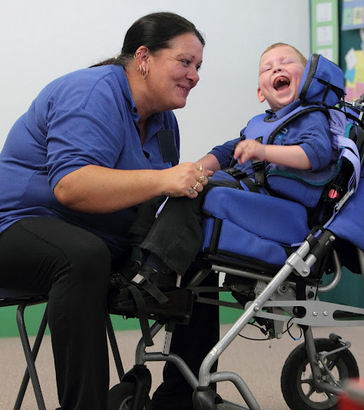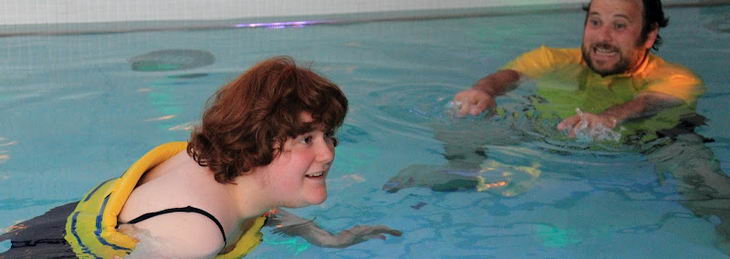
Certain academics argue that any physical activity for a child with PMLD needs to be on the easy side (Goldsmith and Goldsmith, 1998).
Why do they hold this view?
Is there a case for suggesting that this policy will only lead to low expectations and low achievement?
Other authors suggest that the whole learning process is endangered by physical disabilities (Aitken et al, 2000).
(Since the 1980s) a wealth of evidence has accrued to show the positive effects which come when children,
even young infants, have a chance to gain control over their environment, and how that control is severely impaired in the
non-ambulant child.
Even though they have fewer chances to decide and control their experiences, non-ambulant children can still learn by them.
However, those experiences are much more likely to be of frustration and failure. At this point, a second difficulty arises,
because experiences gained in one setting can carry over to other settings. Expectation of failure learned in one setting
makes the learning of new activities much more difficult. The person who is non-ambulant may be 'turned off' the learning
of new tasks and activities. Rather than learning that they can be successful they have learned that there is little point
even in trying.
Aitken et al, 2000
We need to ensure that any physical curriculum is sensitive to the needs and development of each pupil. Ask the following questions.
Is the individual:
- Well enough?
- Rested enough?
- Willing enough?
- Comfortable enough?
- Old enough?
- Young enough?
Is the activity:
- Easy enough?
- Promoting a normal, symmetrical body shape?
The question must not be 'is the individual well, comfortable, or willing?'
Instead, it should be, are they:
- Well enough?
- Comfortable enough?
- Willing enough?

Motor and/or perceptual disabilities can severely limit communication (Bullowa, 1979; Pellegrino, 1997; Coupe O'Kane and Goldbart, 1998).
The conventional ability of normally developing children to reach, grasp, maintain a hold and explore, means that conventional child development models do not take account of those with physical and intellectual impairments (Uzgiris and Hunt, 1975; Dunst, 1980).
A child with PMLD is likely to take a much higher percentage of curriculum time to meet a similar learning objective.
The main reasons for encouraging movement in those with physical difficulties should be to:
- Increase independence;
- Protect body shape; and
- Improve general health and morale.

Aitken, S., Buultjens, M., Clark, C., Eyre, J.T. and Pease, L. (2000) Teaching Children who are Deafblind, London: David Fulton.
Bullowa, M. (1979) Introduction: Prelinguistic communication: a field for scientific research in Bullowa, M. (ed) Before Speech. Cambridge: Cambridge University Press.
Coupe O'Kane, J. and Goldbart, J. (1998) Communication Before Speech, London: David Fulton.
Dunst, C. (1980) A Clinical and Educational Manual for Use with the Uzgiris and Hunt Scales of Infant Psychological Development, Austin, Texas: Pro-Ed.
Goldsmith, J. and Goldsmith, L. (1998) Physical Management in Lacey, P. and Ouvry, C. People with Profound and Multiple Learning Disabilities, London: David Fulton.
Pellegrino, L. (1997) Cerebral Palsy in Batshaw, M.L. (ed) Children with disabilities, Baltimore: Paul H Brookes Publishing.
Uzgiris, I. and Hunt, J. (1975) Assessment in Infancy: Ordinal Scales of Psychological Development, Urbana: University of Illinois Press.